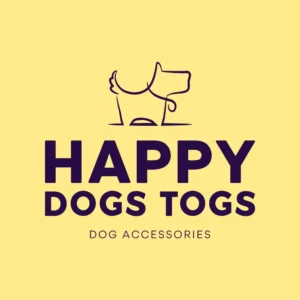Do Dogs Walk Better with a Dog Harness or a Collar
Do Dogs Walk Better with a Harness or a Collar: Which Is the Safer and More Effective Option? Introduction Walking your dog isn’t just about exercise — it’s about safety, comfort, and control. Choosing the right equipment makes all the difference. Many pet owners and trainers debate whether a harness or a collar works better. Which one helps dogs walk more comfortably? Which one keeps them safe? This article compares harnesses and collars to help you pick the best for your dog’s needs. The Basics of Dog Walking Equipment: Dog Collar vs. Dog Harness Understanding Collars Collars fit around a dog’s neck and come in many styles. You’ll find flat collars, martingales, choke collars, prong collars, and even electronic collars. Collars mainly hold ID tags and are used for training or casual walks. They are easy to put on and remove, making them popular for quick outings. Understanding Harnesses Harnesses wrap around a dog’s chest and back. There are different types: vest, step-in, Y-shaped, and no-pull harnesses. Unlike collars, harnesses spread pressure across the chest or shoulders instead of the neck. They’re often chosen for training, safety, or health reasons. Harnesses help control pulling and prevent injury. Does a Dog Walk Better with a Harness? Advantages of Using a Harness Harnesses give owners more control, especially for strong or stubborn dogs. They help prevent pulling by allowing better direction. Dogs pull less because the pressure is on their chest, not their neck. This reduces risk for injuries, especially in small or brachycephalic breeds that struggle with breathing. Veterinarians and trainers agree harnesses are a safer option for many dogs. When a Harness Makes Walks Easier Dogs that pull or rush ahead benefit from a harness. For dogs with neck injuries or tracheal issues, a harness is a must. Think about a German Shepherd pulling on the leash — a harness keeps control safe. An adjustable harness that fits well ensures your dog stays comfortable. Proper fit is key to making harnesses effective. Limitations of Harnesses Poorly fitted harnesses can cause discomfort or chafing. If used improperly, some dogs might pull more or escape. Not all dogs are suited for every harness style. Make sure you choose the right size and adjust it snugly. Training along with the harness boosts its effectiveness. Is a Collar Better for Dog Walks? Benefits of Using a Collar Collars are simple, quick to put on, and great for ID tags. They work well for calm dogs or short, casual walks. Small dogs or older pets often find collars comfortable and familiar. For everyday use, a collar can be convenient and effective. When Collars Are More Effective A collar can be ideal for dogs that don’t pull or have health issues affecting their necks. For small breeds like Chihuahuas or older dogs with limited mobility, collars are less invasive. Expert advice suggests using collars mainly for low-strain walks or quick outings. Downsides of Collars Pulling or tugging on a collar can cause injuries. Choking and damage to the neck are risks if the collar is too tight or misused. It’s essential to fit collars correctly — snug but not tight. Over time, collars worn improperly may harm sensitive neck tissues. Which Option Is Safer and More Effective? Comparing Safety Aspects Research shows harnesses generally cause fewer injuries, especially to the neck and throat. Collars can be safe if used carefully but increase injury risk with pulling dogs. For aggressive pullers, a harness reduces strain and enhances safety. Effectiveness in Training and Control Harnesses give better control, especially for dogs prone to pulling or reacting. They allow for gentle correction and guidance. Collars can be effective for calm pets but might not help in managing pulling or reactive behaviour. Consideration of Dog Breed, Size, and Behavior Larger breeds like Labradors often pull more and benefit from harness control. Small or brachycephalic breeds like Bulldogs or Pugs may do better with collars due to breathing issues. Age and health matter too—older or delicate dogs need gentle equipment choices. Actionable Tips for Pet Owners Assess your dog’s behaviour and health before choosing. Fit harnesses snugly, covering the chest comfortably. Use collars for quick trips with calm dogs. Pair equipment with positive reinforcement training. Check gear regularly for signs of wear or discomfort. Conclusion In most cases, harnesses provide better control and safety, especially for dogs that pull or have health concerns. Collars are simple and work well for gentle, relaxed walks. The best choice depends on your dog’s size, health, and activity level. Focus on what keeps your dog comfortable, safe, and happy. Well-fitting equipment combined with good training makes every walk a safer and more enjoyable experience. References & Expert Quotes Veterinarians agree that harnesses reduce the risk of neck injuries and improve leash control. Dog trainers recommend harnesses for dogs that tend to pull or are reactive. For further reading, consult professional guidelines by the Kennel Club or reputable dog training organisations.

